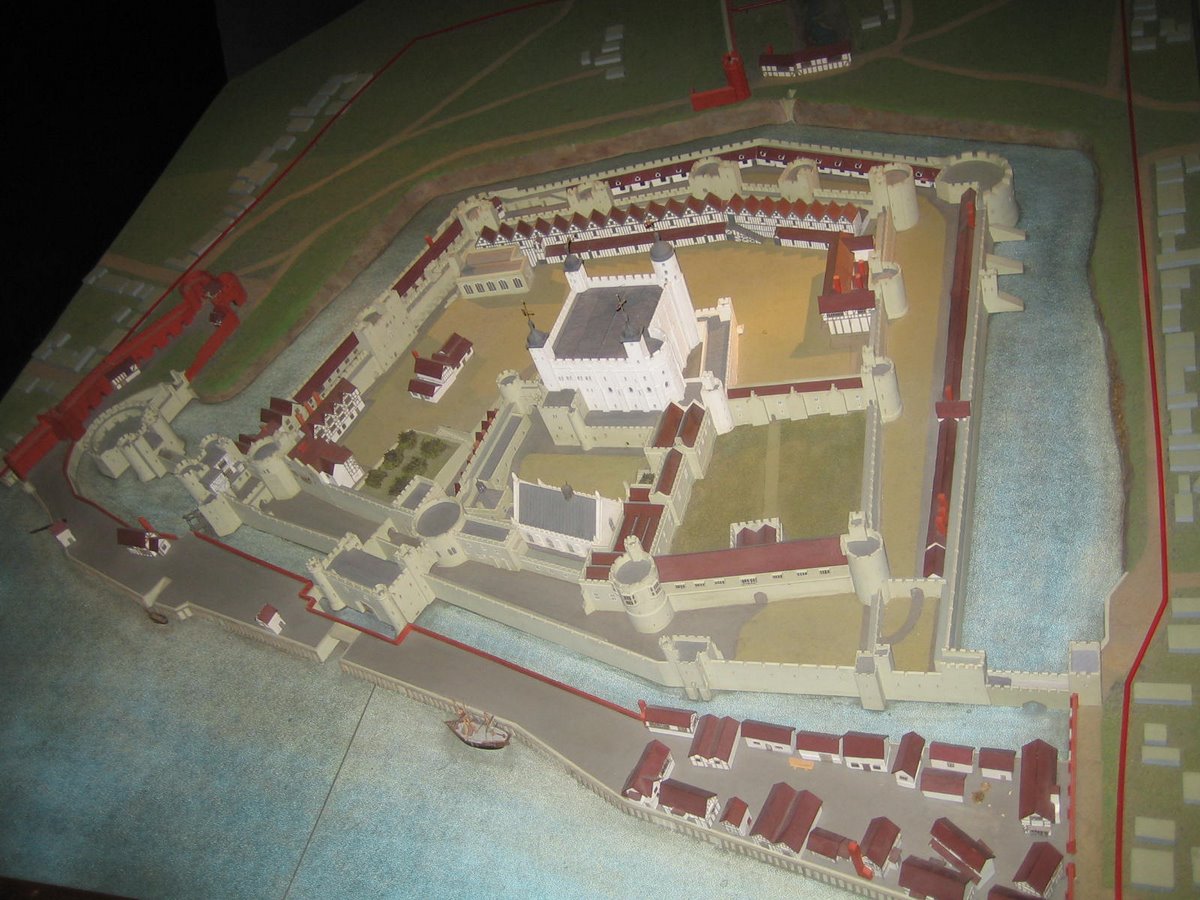
Below is a model of the Tower of London looking north around 1547, about the time that castles such as this were made obsolete by the rapid advance of gunpowder and cannons.
 |
The fortress evolved over the centuries as a succession of paranoid kings further fortified this area just within the southeastern edge of London's old town walls on the Thames, shown at the bottom of the picture. William the Conqueror (no longer called "William the Bastard" because, after all, he won the war), erected the white building at center in 1078. Before entering London, his men had a camp here probably surrounded by a ditch and exploiting the bastion of the walls that dated back to the Romans. While William was the Conqueror, the Brits were hardly subdued. He built the white tower to protect himself from them. He was an invader with an occupying army. His white tower was his green zone.
The model shows the double ring of walls. The first was completed by Richard the Lionhearted in the 12th century and contains 13 towers. Richard was more lion-hearted than engineer-minded. The moat he built couldn't hold water until Henry III fixed it using Dutch technology in the 13th century. Since Henry's father, John, had successfully besieged the Tower while Richard was off to the Holy Land, Henry knew it to be wise to further fortify the place even though he was only 9 years old when his reign started. This was further enforced when he had to flee to the tower to defend himself from his own nobles. He built some areas too fast and they collapsed. Later his son, Edward I, filled in that moat, added the outer ring of walls, and created another moat that lasted until 1843 when it was drained. During World War II, it was allocated to locals for vegetable gardens. Today it's used for such things as soulful James Brown concerts. I feel good.
Here's a view of one of the 6 towers on the outer wall rising from the drained and grassy moat.
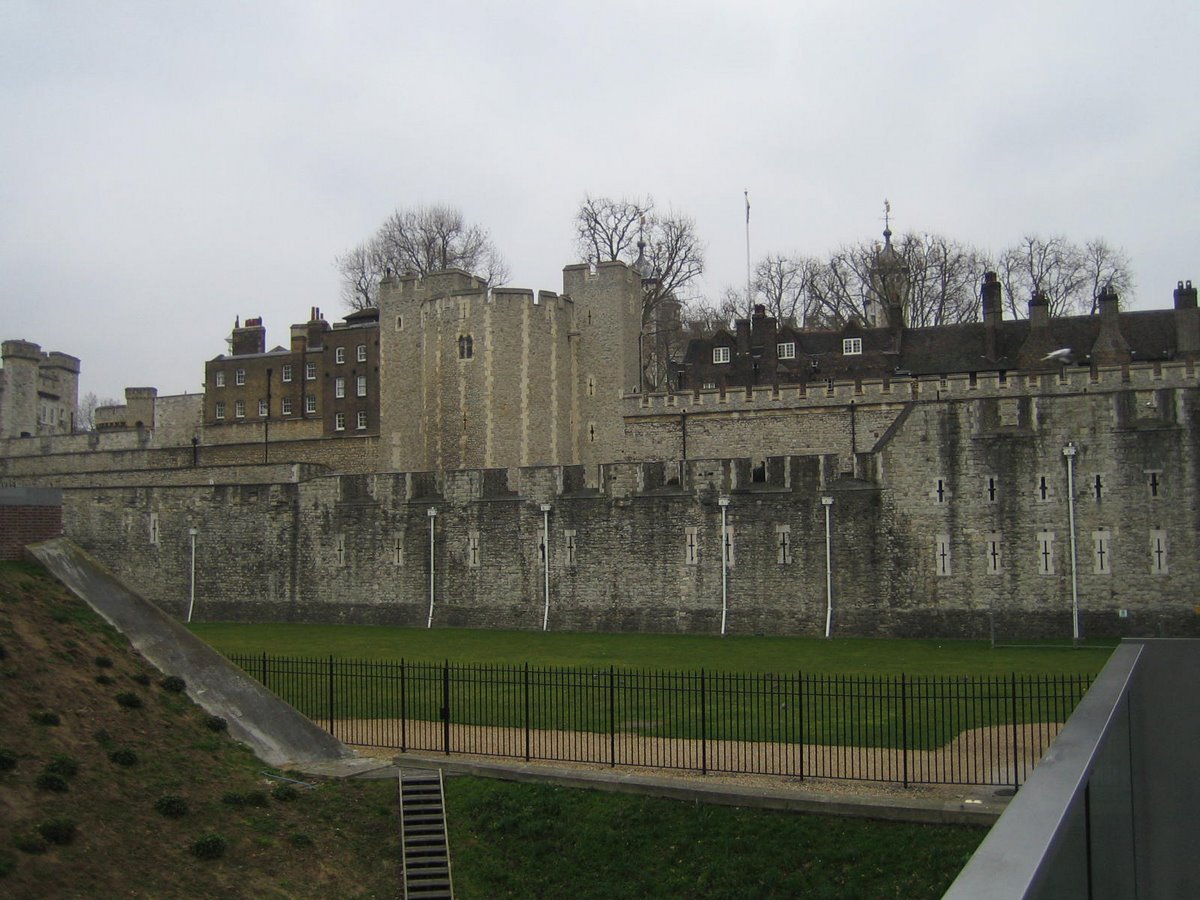 |
Note the archers slots in the walls. Here's a view from the inside:
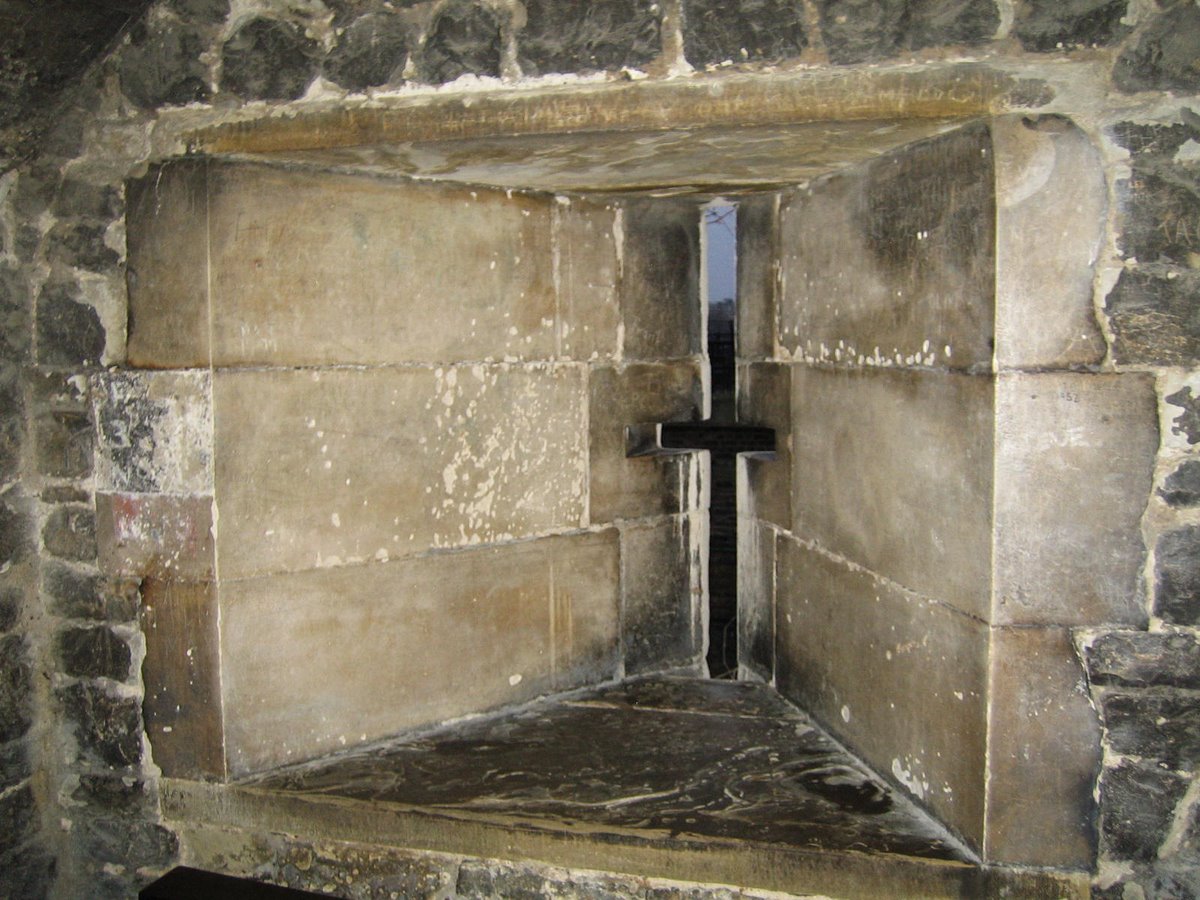 |
These walls, of course, have few entrances to defend. This set of towers defended the land entrance. Today it is under constant attack by millions of tourists, armed with the price of admission (which approaches nearly 30 of our deteriorating American Dollars or £14.95). The plastic barriers control their entry. Behind, an elevated walkway traverses the moat, replacing the old drawbridge.
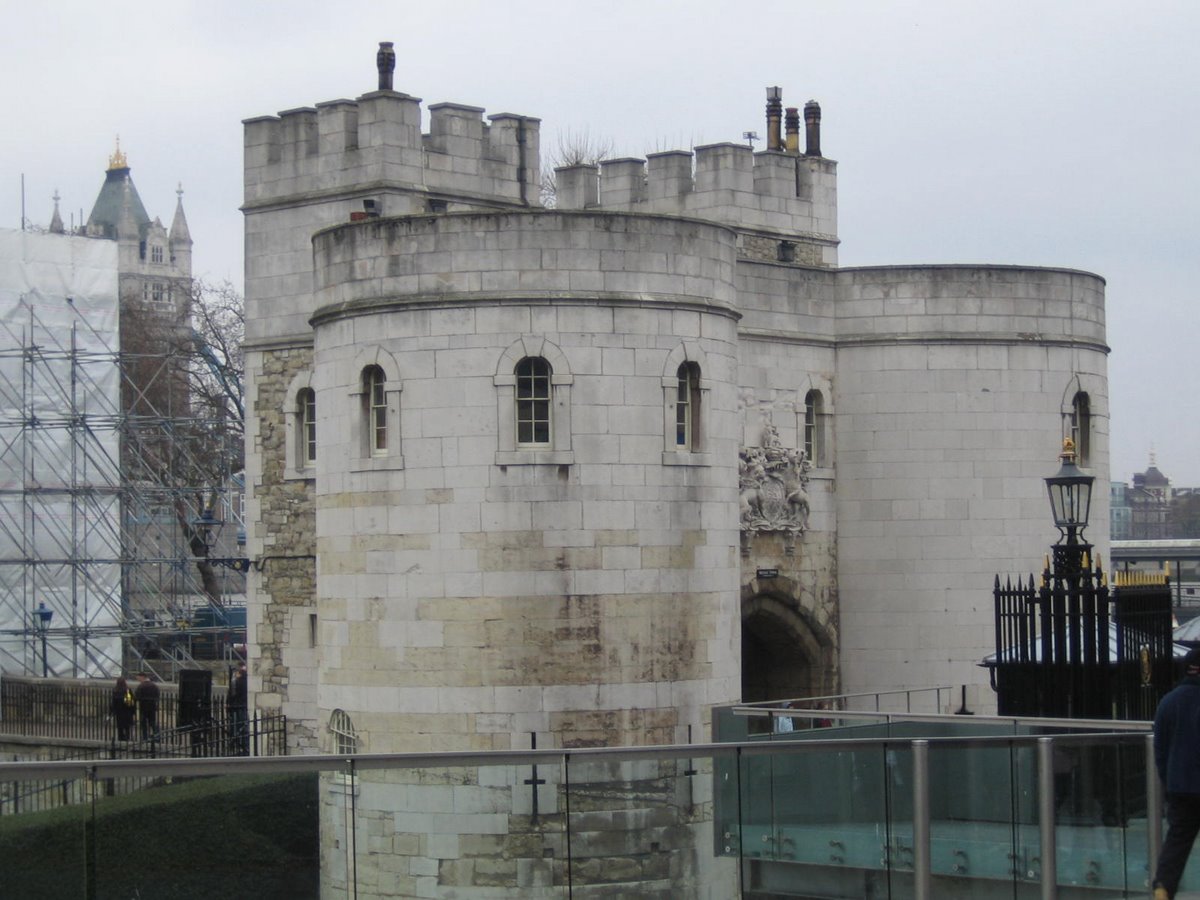 |
However, in the fort's early days, surface roads were not much in London and so many entered through the Thames gate shown below. It's called the "Traitor's Gate" because prisoners typically entered here. (For a water view, click here). The gate sits at the bottom of St. Thomas Tower, named after St. Thomas of Canterbury.
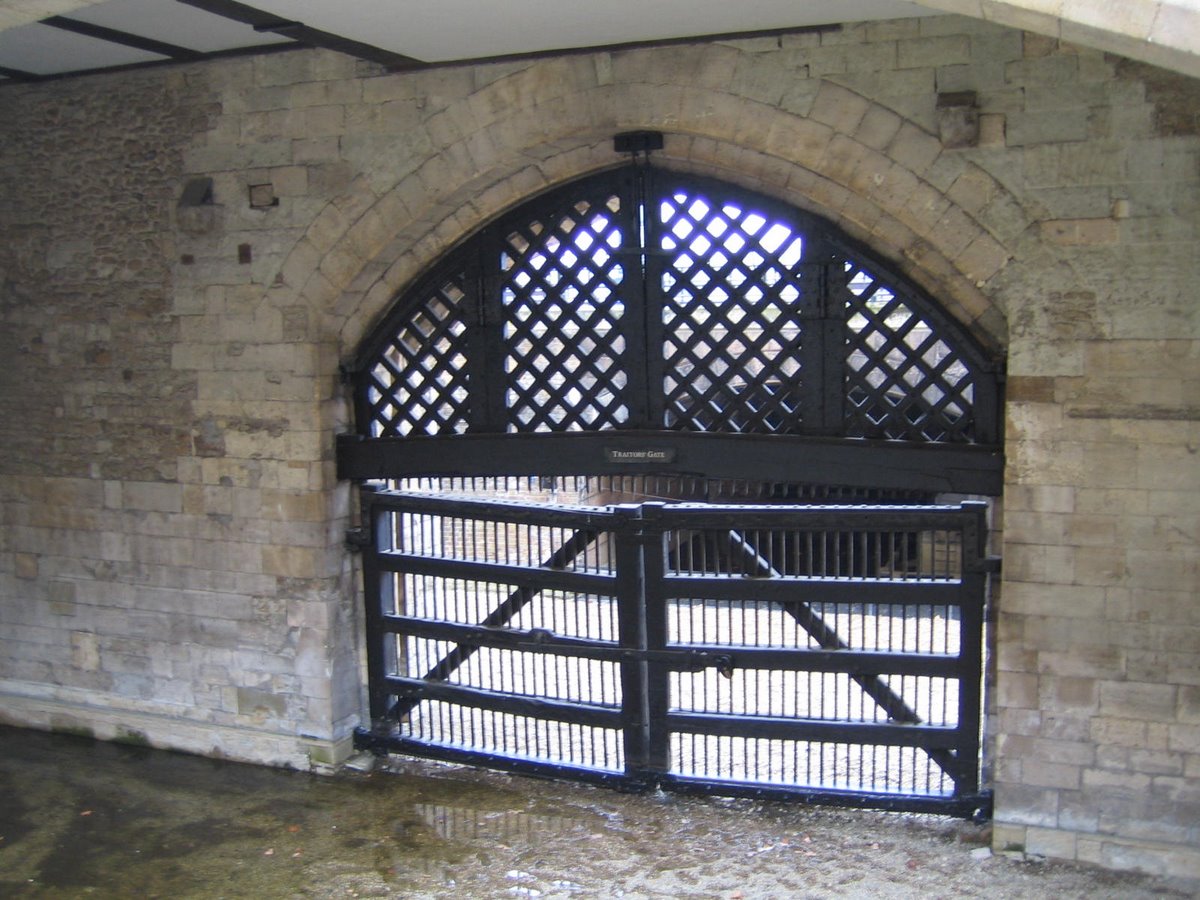 |
Here's a closer view of the inner wall near Beauchamp tower. Today, old moats make for good parking.
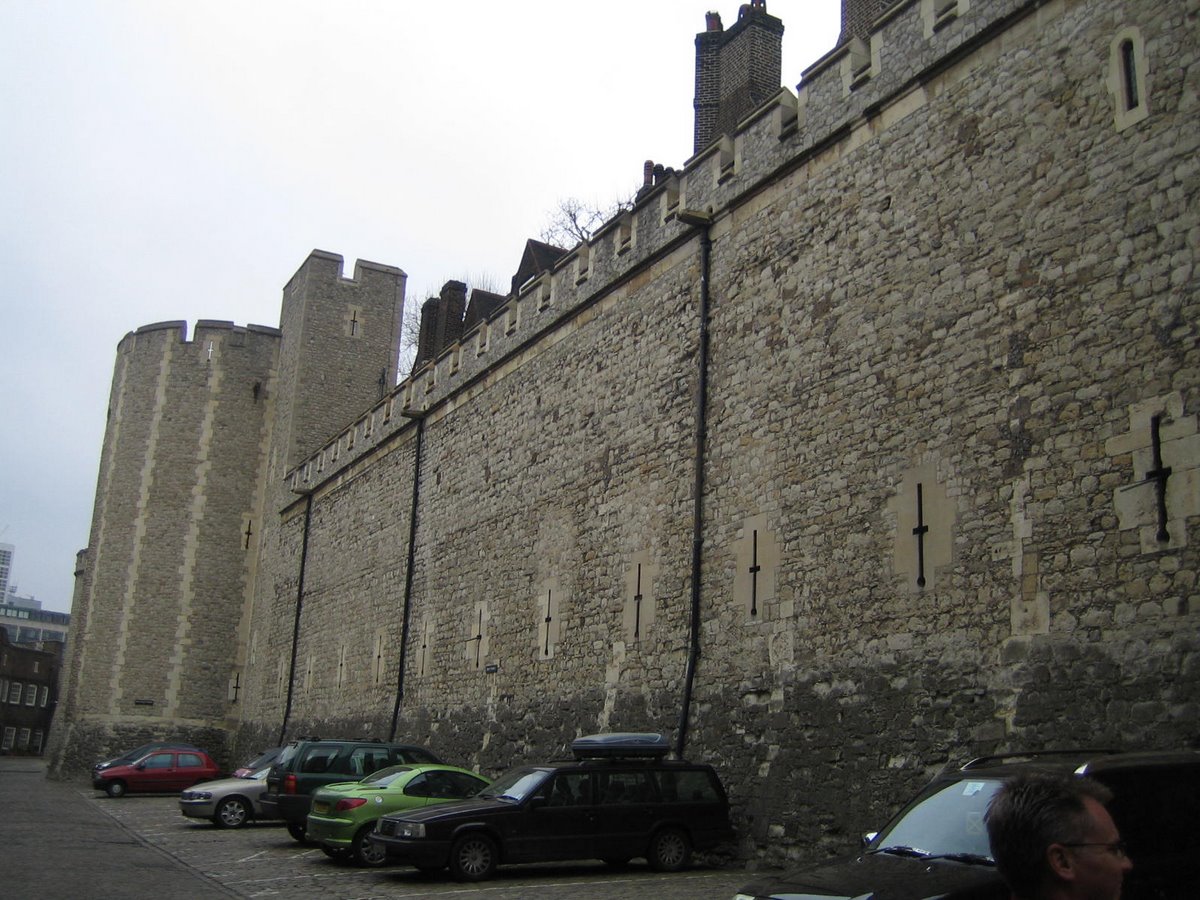 |
|
In more recent times, the space between the two walls became populated with other buildings that needed to be secured. Prime among these was the Royal Mint where for 300 years almost all British coins were made. Edward I built the first building in the late 13th century. Eventually the Mint outgrew the space between the walls and moved out of the Tower in 1812. The building at left was used as the Royal Mint. Isaac Newton lived here when he became Master of the Mint, a position for which, he received knighthood (not for his scientific work). He moved England to the gold standard during his 31-year tenure. |
 |
The picture below shows the gate through the inner walls looking at the edge of the no-longer White Tower.
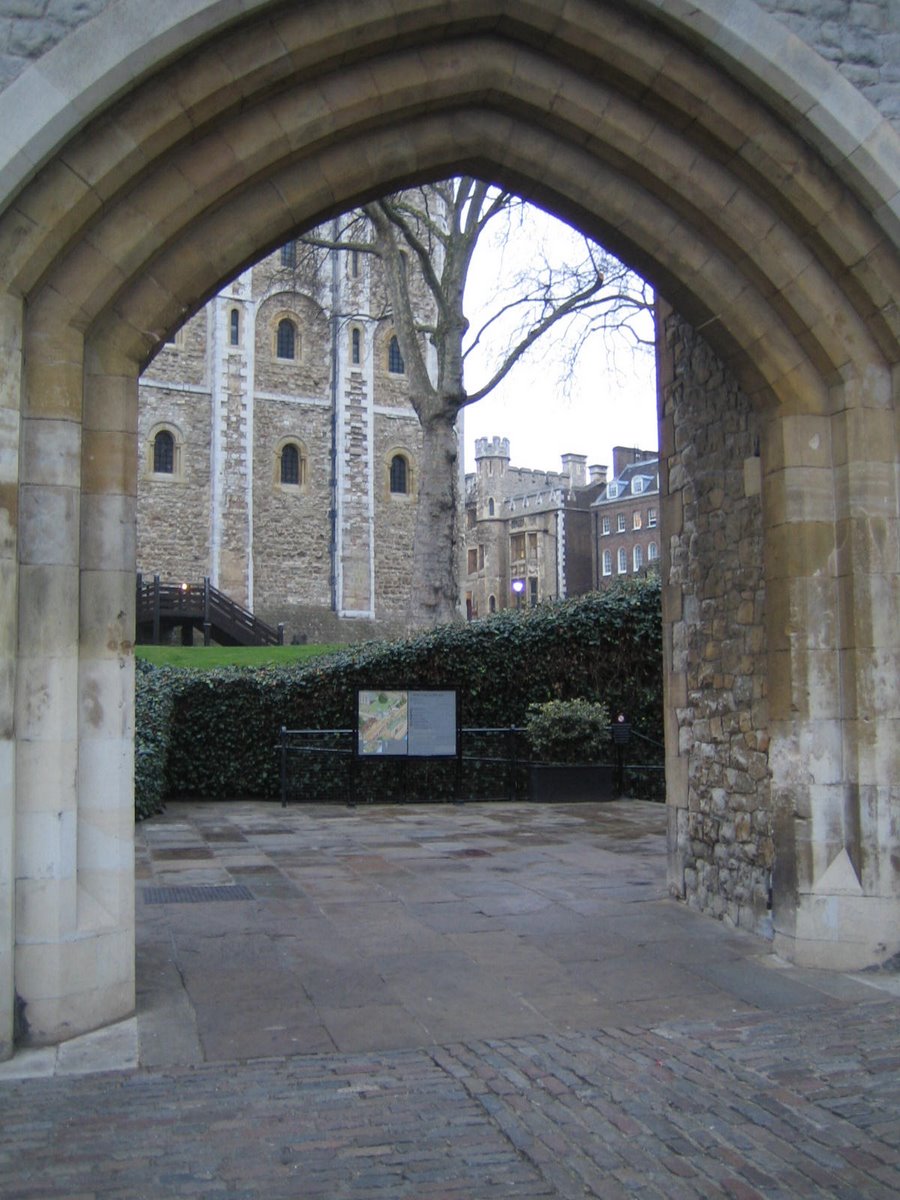 |
Here's another view of the cobble-stoned space between the two ring of walls; this is probably Lanthorn tower.
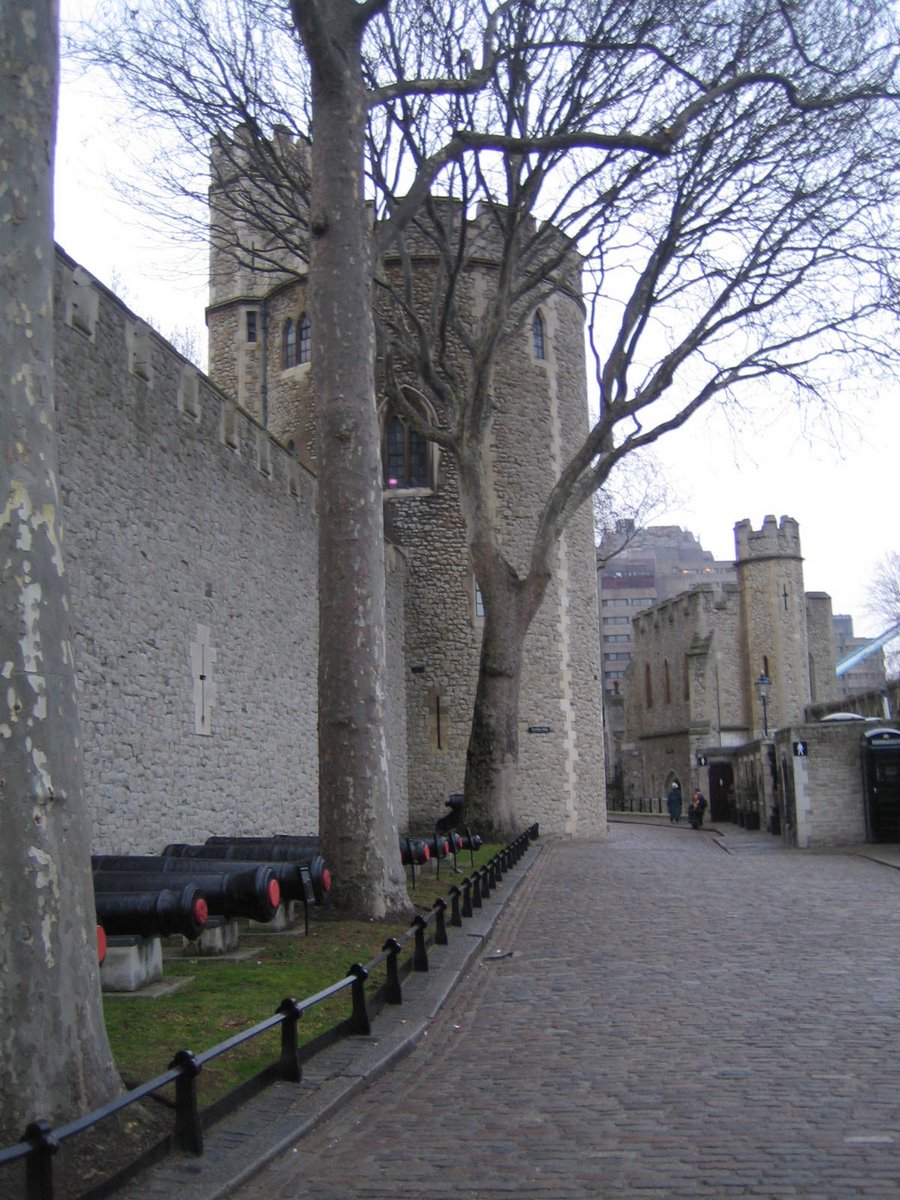 |
|
Below and right are two pictures of Bloody Tower that leads into the inner courtyard. This must have been a fairly comfortable place despite its name; Sir Walter Raleigh lived here for 13 years with his family, even growing tobacco on the grounds. Edward IV left his two sons in the care of his brother Richard, who seized the throne for himself and imprisoned the two boys (including the as yet uncrowned 12-year-old king Edward V) here for several years starting in 1483 until they "disappeared." (Boys will be boys!) Two hundred years later remains were found, probably from these two youngsters. They were interred in Westminster Abbey, the vertical graveyard of England's kings. If those bones were those of the boy-king Edward V, then his life had come full circle. He was born in Westminster Abbey as well. The queen had sought sanctuary there during a rebellion that had driven her husband, the king, out of the country.
Below is a photo of the portcullis in the Bloody Tower. Portcullises were typically made of oak and surfaced with iron. The passageway would have a portcullis on either side. The attackers would be allowed to enter the area where they would become trapped when the portcullises suddenly dropped. They'd then be sitting ducks for archers in the interior or for heated oil scalding them from above. A good addition to a bloody tower! |
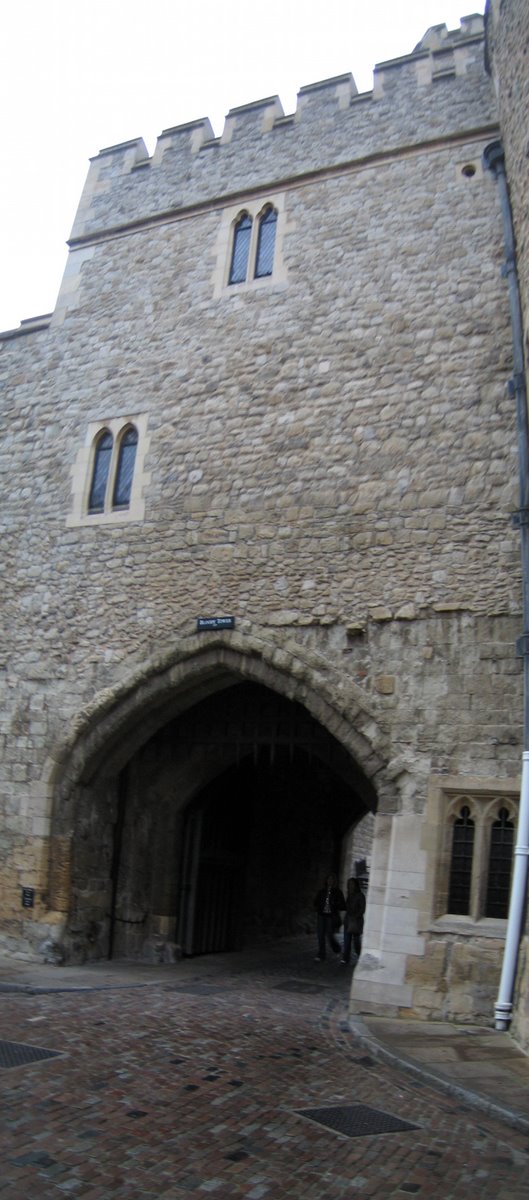 |
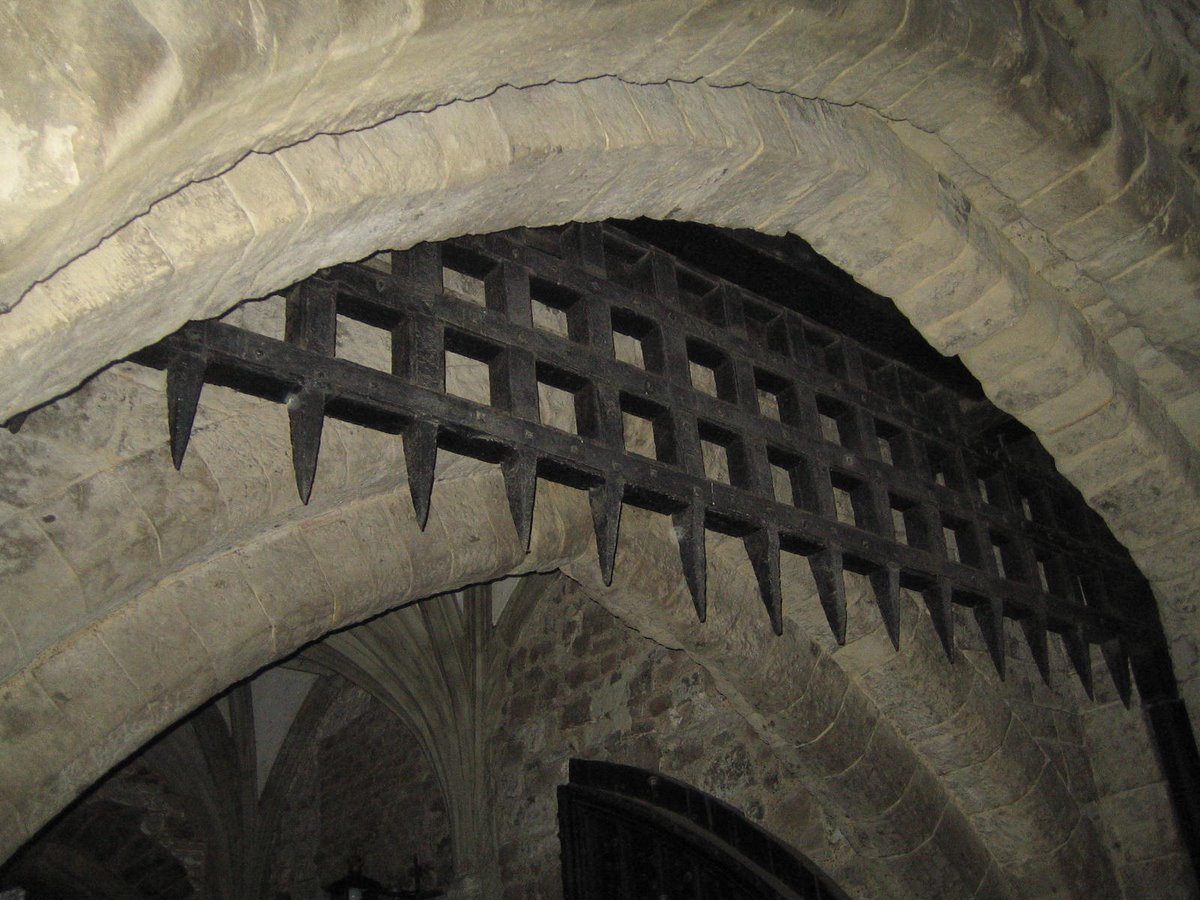 |
Here's another view of the area between the walls, looking west from Bloody Tower:
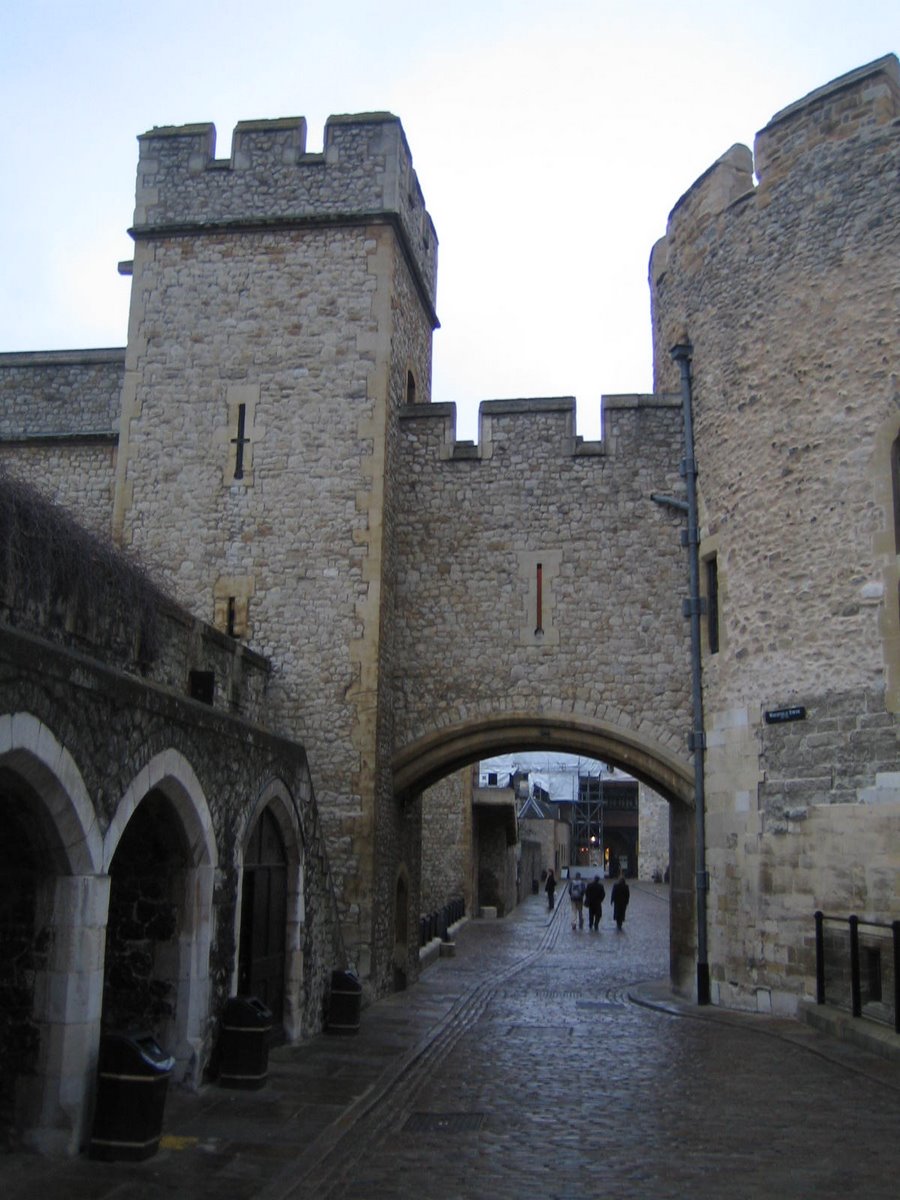 |
Here's a view looking south. The wall blocks our view of the Thames which lies just beyond it. Beyond that are the modern buildings on the south shore of the Thames including the bulbous London City Hall at left.
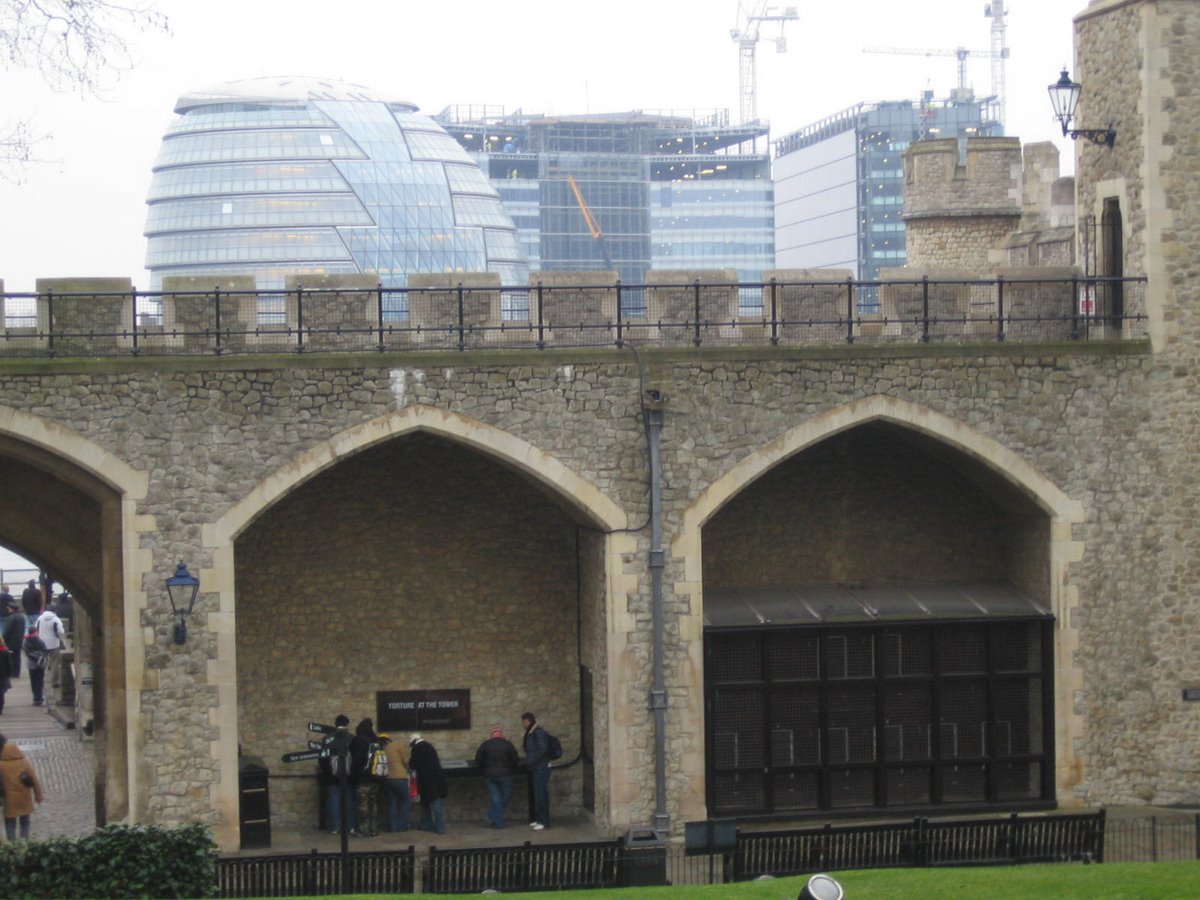 |
And a parting shot looking from the north as London residents emerge from the tube near tower hill. A chunk of the old city wall is on the right (the top is medieval, the bottom below the red marker lines is Roman). Between the fence and the stone curtain wall sits the moat. When this was a functioning fortress, a "no man's land" --the length of an arrow shot -- lay on this side. This forced any would-be attacker to approach the moat without cover and within bowshot of the walls. The thin towers in the middle are the White Tower, William the Conqueror's keep. We'll talk about that next.
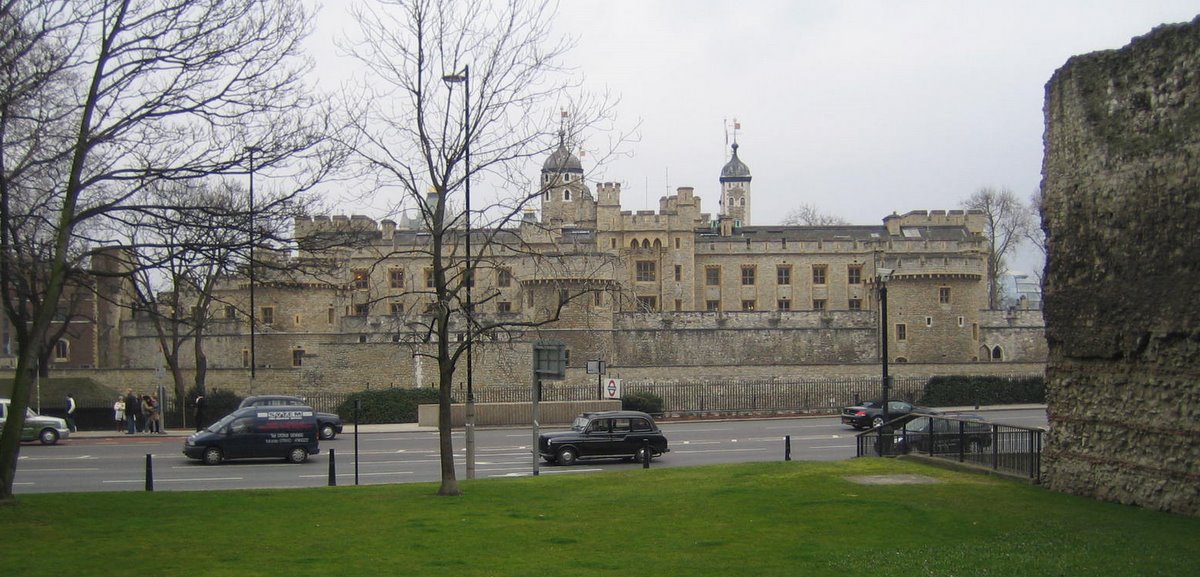 |
![]()
This
work is licensed under a Creative
Commons Attribution-NonCommercial-NoDerivs 2.5 License.